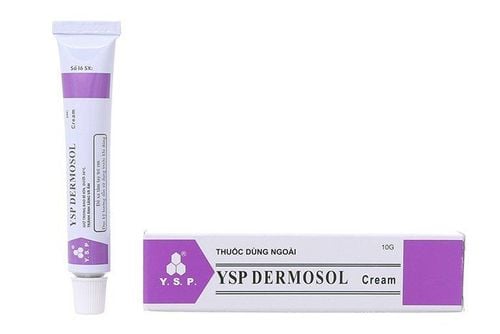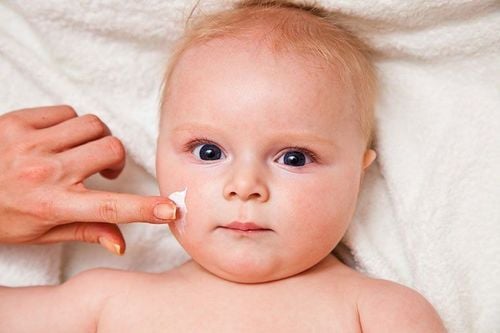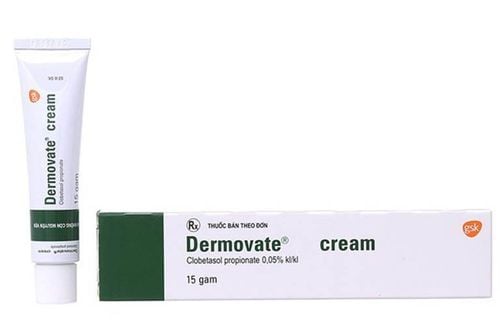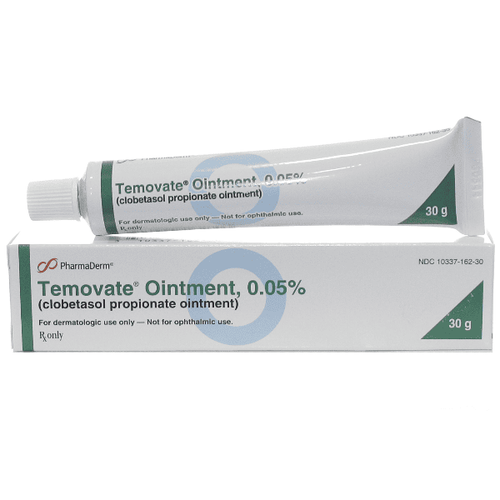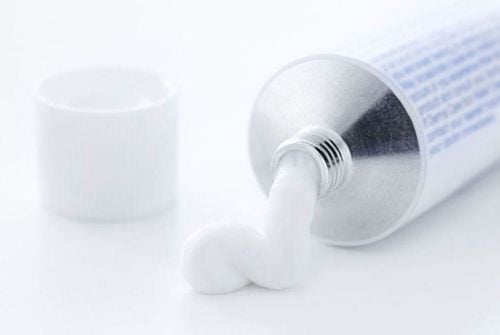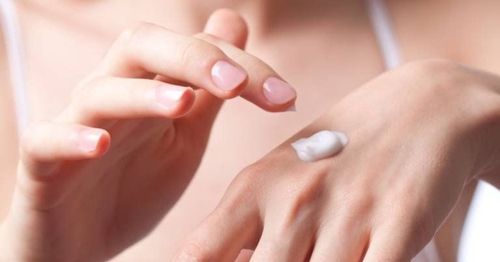This is an automatically translated article.
Nail psoriasis is a dermatological disease that appears on the fingers with a relatively large incidence in the community. Although nail psoriasis is not too serious, it has a great impact on life and aesthetics in unfortunate people.
1. Causes of nail psoriasis
Nail psoriasis is a common form of psoriasis. The exact cause of nail psoriasis is still unknown. However, there are a number of factors that are considered risk factors for nail psoriasis such as:
Weakened immune system and body's resistance. Genetic factors: If there is a family history of nail psoriasis, the chances of children being born with nail psoriasis are quite high. Polluted environment, often exposed to toxic chemicals. Psychological instability, often stressed and stressed. People with a history of skin diseases in the fingers before and not treated promptly lead to nail psoriasis complications.

Thường xuyên căng thẳng cũng có thể là nguyên nhân gây vẩy nến móng
2. Clinical symptoms of nail psoriasis
Nail psoriasis can affect one or more nails. Usually when nail psoriasis appears, sufferers may experience the following mild to severe manifestations:
2.1 Stage 1 The skin around the nail has signs of changing nail color to yellow, green or dark brown. Also appear white spots on or under the nails.
2.2 Stage 2 Slight deformity of the nails. On the surface of the nail appear grooves or ridges, pitting holes with varying degrees of severity depending on each case.
2.3 Stage 3 When the disease is severe, the nail falls off causing pain and discomfort. At this point, white scabs will begin to form underneath the nail. When the nail is removed from the nail bed, it will create conditions for bacteria to multiply and grow in this space, leading to a yellow patch on the tip of the nail. Thickened nails cause very uncomfortable sensations.
2.4 Stage 4 Damage to the nail causes bleeding and severe damage to the nail. The stratum corneum under the nail skin increases and thickens 2 or 3 times compared to normal and pushes the nail up, causing discomfort or pain when the patient exerts force on them, even peeling the nail affects daily activities. day.
3. Treatment methods for nail psoriasis
3.1. Topical medications In the case of mild nail psoriasis, the use of the following creams and lotions will relieve symptoms.
Corticosteroid Tazarotene Calcipotriol (similar to vitamin D3) Tacrolimus 3.2. Systemic medications If nail psoriasis interferes with walking or using your hands, your doctor will prescribe a systemic treatment for nail psoriasis. These drugs do not work on specific areas of symptoms, but affect the whole body.
Some drugs have systemic effects in the treatment of nail psoriasis:
Methotrexate Cyclosporine Retinoids Apremilast (Otezla) Besides oral drugs, doctors may prescribe intravenous drugs to treat nail psoriasis. such as Otezla (apremilast), Injectable corticosteroids, Humira (adalimumab), or Enbrel (etanercept). However, the drug is only injected under the supervision of specialists to limit side effects. The most dangerous side effects are drug resistance, drug resistance, superinfection, relapse, difficulty in treatment..
3.3. Biological products Biological products are products that are prepared and extracted from ingredients available in nature. Probiotics are useful in the treatment of many conditions, including psoriasis and especially nail psoriasis.
3.4. Fungal eradication Often, cases of nail psoriasis are also co-infected with the fungus. Therefore, when treating psoriasis, doctors often prescribe drugs to treat fungal infections at the same time.
Medicines used to treat fungal infections in people with psoriasis include:
Terbinafine Itraconazole However, these drugs can all cause side effects such as skin rashes or liver damage.

Có thể chữa bệnh vảy nến bằng thuốc điều trị nhiễm nấm
3.5. Nail clipping The nail clipping is necessary, but in the case of nail psoriasis this is not simple. The methods of nail removal for people with psoriasis are:
Surgery Using high concentration of X-ray urea to remove the nail However, when it grows back, the nail will show abnormal signs. If an infected nail is causing pain, your doctor may prescribe more pain medication.
3.6. Phototherapy Psoriasis can be treated with phototherapy or lasers. However, this method is only applicable to mild or new-onset cases. This is a method of using ultraviolet light to treat nail psoriasis. Under the action of ultraviolet rays, it kills bacteria that cause inflammation. At the same time, phototherapy helps to regenerate new skin cells, improving nail aesthetics. However, treatment with phototherapy using ultraviolet A (UVA) light increases the risk of skin cancer. The cost is high, but only symptomatic treatment, not radical.
4. Diet for people with nail psoriasis
Cases of nail psoriasis should abstain from eating some of the following foods:
High protein and fishy foods: Shrimps, crabs, crabs, bamboo shoots, eggplants, sausages, sausages, chicken, canned goods, eggs. Drinks containing stimulants: Wine, beer, coffee, tea, tobacco, ... Foods that contain a lot of fat: Sugar, milk, fat, butter, chocolate, synthetic sweets.... In addition, people with psoriasis in the nails, should add the following foods:
Foods rich in vitamins A, B, C; and foods that are easy to digest and prevent constipation: tomatoes, yellow sweet potatoes, papaya, bananas. Add more green vegetables to the menu such as kale, cauliflower, cabbage, bitter melon.... Enhance foods rich in omega 3 and zinc found in salmon, mackerel, basa fish, soup. clams. Eat beef 1-2 times, eat pork, tofu, frog meat... Increase to eat more vegetables, drink a lot of cool water every day is very good for the treatment process. Maintain a reasonable diet according to a certain hour; Exercise to excrete perspiration. For cases of nail psoriasis with edema, water retention should reduce foods with a lot of water such as lemons, soups, drink less water; limit drinking orange juice lemonade...
5. Prevention of nail psoriasis
Psoriasis is a disease affected by inherited genes. Therefore, the prevention of the disease is not possible. However, after treating nail psoriasis, you should apply preventive measures, take care of your nails at home to prevent the disease from returning. Specifically:
Cut fingernails short so that nothing gets stuck between them. Protect fingernails with psoriasis from injury by wearing cotton gloves when doing household chores like washing dishes, doing laundry, or being exposed to harmful chemicals. Do not clean your nails by rubbing them with a nail brush or sharp object to prevent bacteria or fungi from entering and causing nail psoriasis. Use moisturizer on nails and cuticles, the dead skin layer at the site of nail psoriasis. This is a measure to help prevent dry skin and peeling, cracking in nails. Follow a scientific diet rich in antioxidants, zinc, beta carotene and folate like carrots and salmon to promote healthy new skin cell production and limit infections. Limit exposure to skin irritants that cause festering such as artificial, irritant, fatty, and spicy. Create a comfortable psychology, it is best to have a plan to balance work and rest time.
If you have unusual symptoms, you should be examined and consulted with a specialist.
Please dial HOTLINE for more information or register for an appointment HERE. Download MyVinmec app to make appointments faster and to manage your bookings easily.




